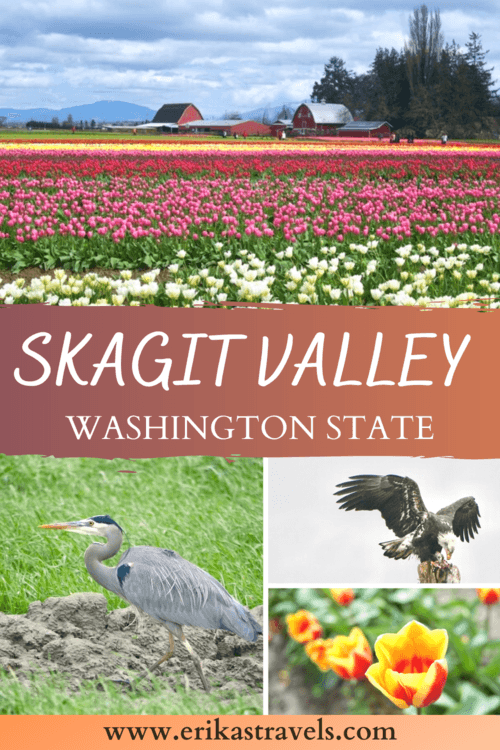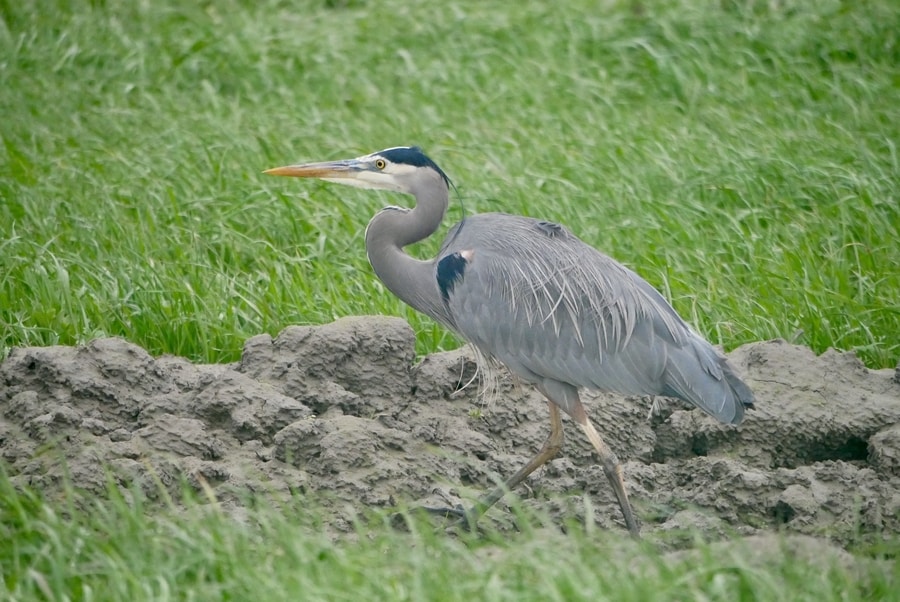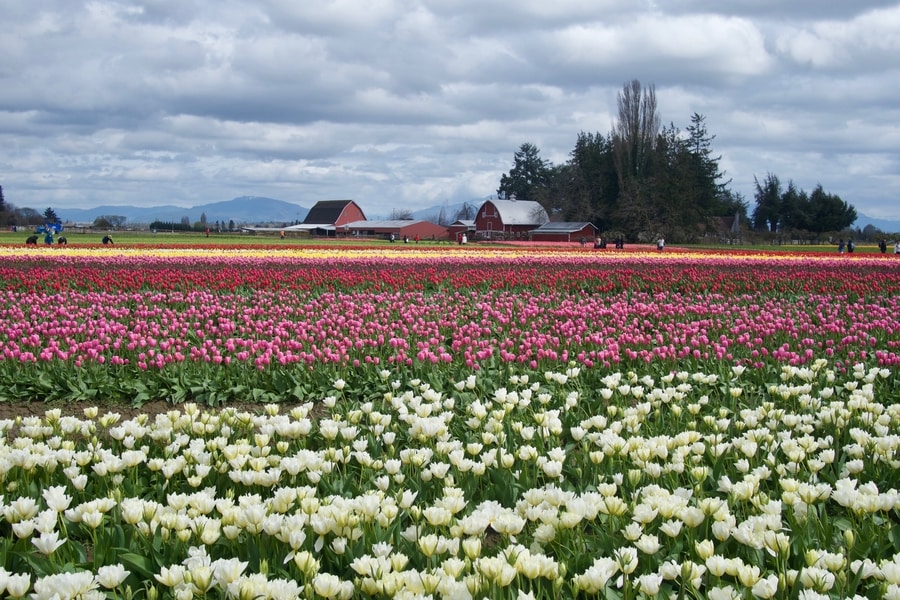
Skagit Valley Day Trip from Seattle
Every year during springtime, Seattleites flock to the Skagit valley in order to capture Instagram-worthy selfies against a backdrop of tulip fields.
The rows of red and purple and pink are a spectacular sight to behold. And it is no wonder that people will withstand clogged streets and traffic jams in order to catch a glimpse of their beauty.
Yet, once the flowers shed their petals, the verdant valley reverts to being an afterthought. Aside from its annual springtime tulip bloom, Skagit County is mostly regarded as drive-through country. It is a place that people traverse en-route to Canada, or the North Cascades, or Whidbey Island.
But linger for a while, and you may understand why I believe the fertile lands along the Skagit River receive far less credit than they deserve.
THINGS TO DO IN SKAGIT COUNTY, WASHINGTON
Washington’s Skagit County stretches from the shores of the Salish Sea to the towering peaks of North Cascades National Park. It encompasses quaint waterside towns, winding scenic roads, farm-speckled fields, and tucked-away mountain communities.
The area’s proximity to Seattle makes it a fantastic day trip destination.
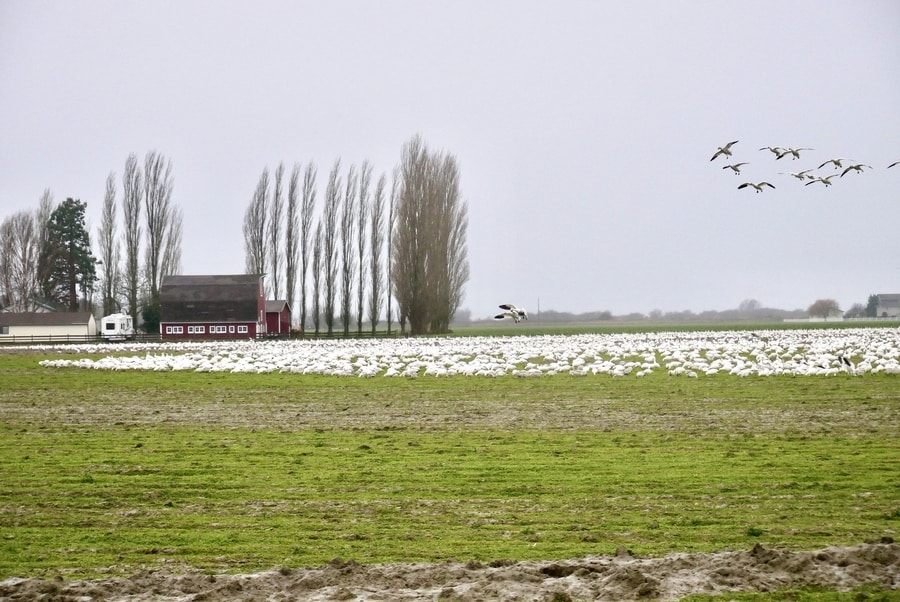
Over the years, Dan and I have visited the Skagit River Valley in many different capacities. On some occasions, it has been a drive-by destination en-route to Orcas Island or the Mount Baker Scenic Byway. At other times, it is the valley itself that has drawn us in with its abundant wildlife and hidden gems.
VISIT THE SKAGIT VALLEY TULIP FIELDS
If you’re a Seattleite, you probably find the word ‘Skagit’ to be somewhat synonymous with tulips. Washington’s Skagit River Valley proves that—come April—you don’t have to travel all the way to the Netherlands to see flower tapestries in all the colors of the rainbow.
The Skagit Tulip Festival dates back to the late 1800s. The annual celebration is essentially a self-guided driving tour that follows the country roads between La Conner and Mount Vernon. It draws throngs of camera-wielding visitors who are keen on seeing the area’s most vibrant displays.
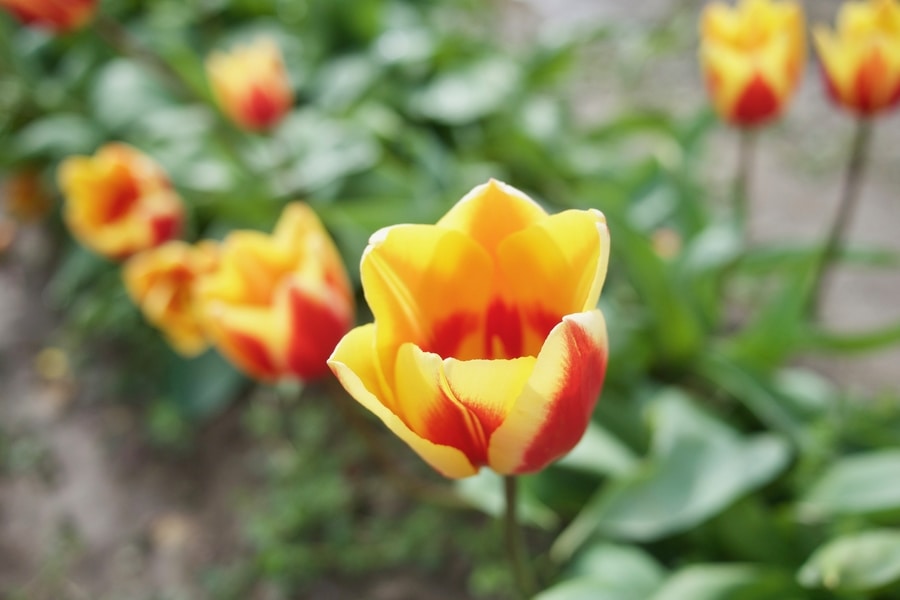
Located halfway between La Conner and Mount Vernon, Roozengaarde boasts truly spectacular color-drenched fields. The farm is a go-to destination for photographers and flower-lovers. It boasts the most idyllic tulip fields in the Skagit Valley.
Roozengarde is the leading grower of bulbs in North America. The farm operates a public display garden and gift shop which, alongside the family-run Tulip Town, is a major seasonal attraction.
It is well worth the crowds and $10 admission price.
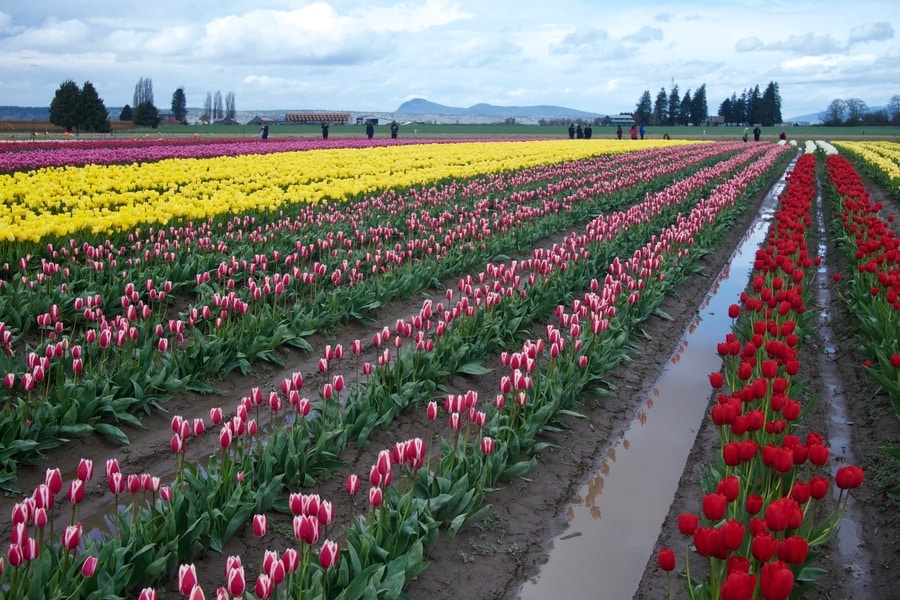
The Skagit River Tulip Festival is one of the most popular springtime day trips from Seattle. With Mount Baker and a Dutch-inspired windmill standing in the background, opportunities for photography abound.
TOUR THE AREA’S OLD BARNS
The Skagit Valley is one of the Pacific Northwest‘s premier agricultural regions. Over 90 different crops are grown in the area. Aside from flowers, its bounty includes berries, potatoes, and Jonagold apples.
Skagit County’s agricultural heritage is reflected in the longstanding barns that lie sprinkled about its verdant fields. The barns litter the countryside—many featuring ghostly decrepit facades that have fallen into total disrepair.
The Skagit County Historical Museum put together a heritage barn tour. A self-guided driving route, it winds through the valley and includes a total of 55 registered historic buildings.
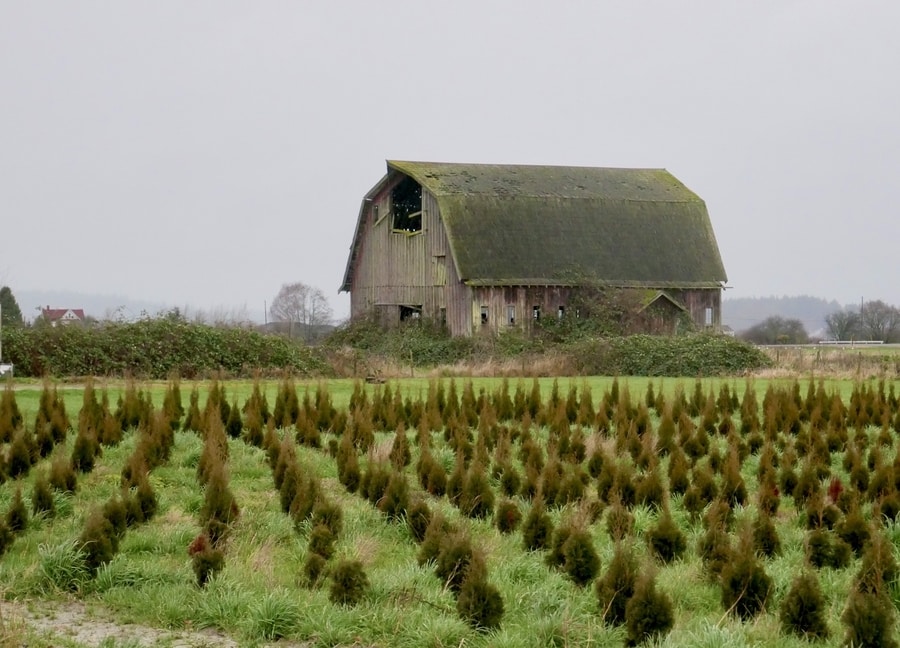
While Dan and I have not completed the entire barn tour, we’ve come across some of the structures while traveling en-route to other destinations. The barns add a splash of visual history to the region’s pastoral landscape.
SEARCH FOR BALD EAGLES
The upper Skagit River region is quiet during winter months. With Highway 20 closed near Ross Dam, the popular thoroughfare comes to a dead end.
But contrary to intuition, winter is one of the best times to experience the area. The Skagit River Valley is a paradise for bird-watchers during Washington’s gloomy season. Every year, bald eagles descend on the riverbanks and pose majestically for photographers. At times, their numbers can reach into the hundreds along a short stretch of river from Rockport to Marblemount.
The Skagit River Bald Eagle Interpretive Center is located at Howard Miller Steelhead County Park in Rockport. This center is open to the public and offers guided hikes and guest speakers on weekends.
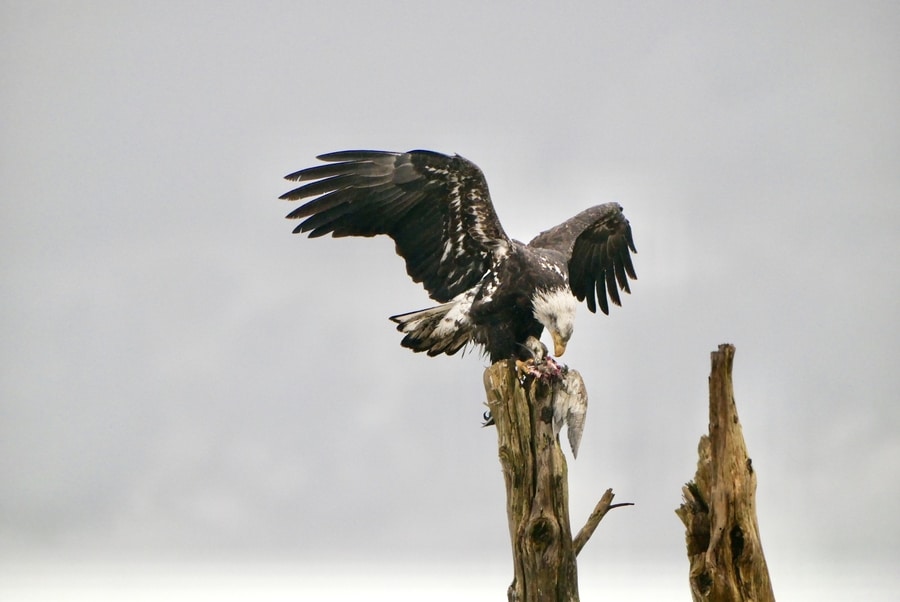
While Dan and I saw a few eagles on our trip up the Skagit River, we had our best sightings at the Wiley Slough Estuary near La Conner.
The Wiley Slough sits on the southeast corner of Fir Island, in the Skagit River Delta. The wildlife unit is a 190-acre tidal marsh lined with cattails and studded with partially-submerged tree trunks. It is brimming with eagles, herons, and a wide array of waterfowl.
As a multi-use area managed by the Washington Department of Fish and Wildlife, the slough is also a popular spot for waterfowl hunting.
Don’t be alarmed if you hear gunshots firing off in the distance.
VISIT HISTORIC LA CONNER
The small community of La Conner in is one of the top places to visit in the Skagit Valley. Nestled between the Skagit River Delta and the Salish Sea, La Conner is both a fishing village and an artists’ colony. The community is known for its architecture and its adorable waterfront shops.
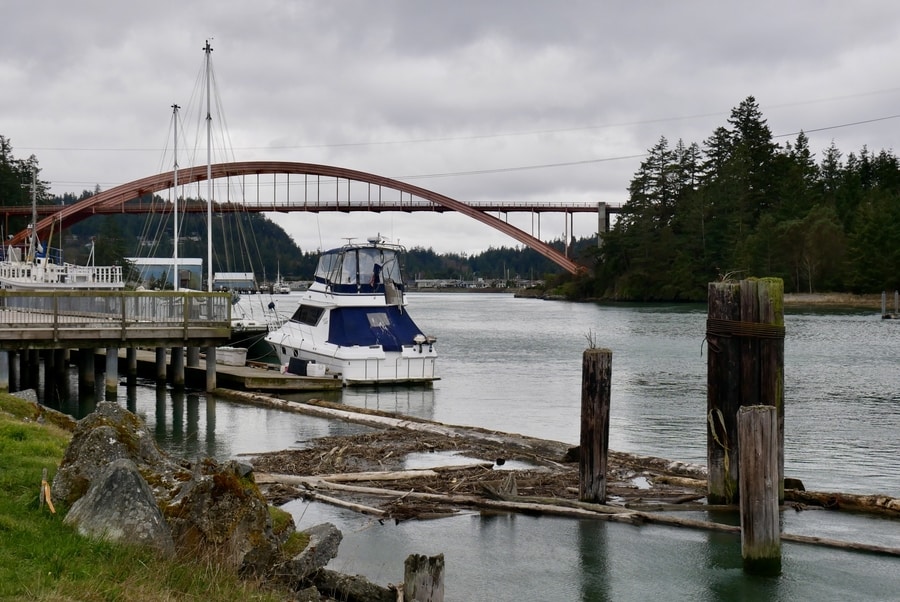
With views of the water and a historic crescent-shaped bridge, the beautifully-positioned town is one of the most beautiful in Washington.
DRIVE THE CHUCKANUT SCENIC ROAD
When Dan and I make the drive from Seattle to Bellingham, we often take a detour via Chuckanut Drive. A scenic byway that is sometimes referred to as Washington’s Big Sur, the 24-mile curvy route hugs the sheer sandstone cliffs of the Chuckanut Mountains. Its winding ribbon of pavement connects the valley’s fertile farmlands with Bellingham’s Fairhaven neighborhood.
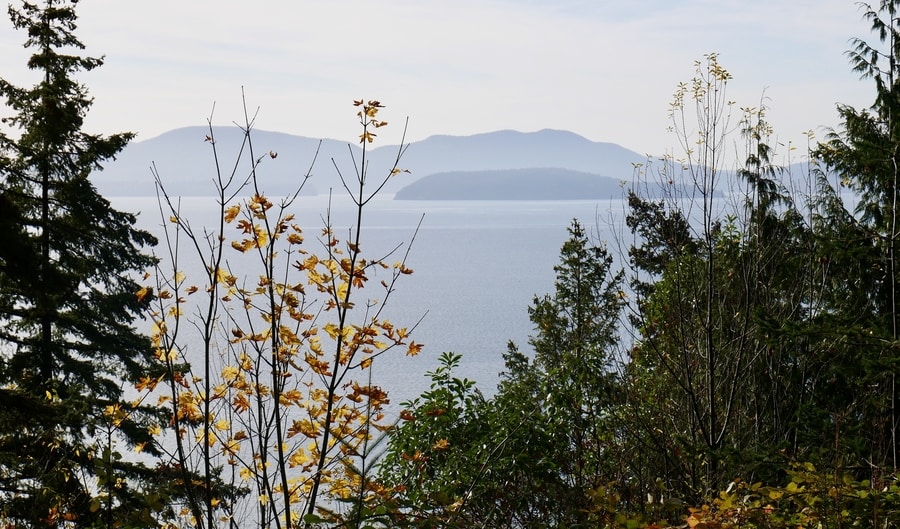
Chuckanut Drive is the only place where Washington’s Cascade Mountains meet the sea. Its gorgeous viewpoints extend across the Samish Sea to the San Juan Islands.
While the drive itself is a destination, the winding road contains a few noteworthy stopping places. Larrabee State Park lies at the drive’s halfway point. Washington’s first state park, it offers camping, hiking, and fishing. From its parking area, a short trail leads to the tide pools on Clayton Beach.
PEER OVER DECEPTION PASS
Deception Pass separates Whidbey from neighboring Fidalgo Island in Skagit County. It also connects two bodies of water—the Puget Sound and the Strait of Juan de Fuca—in a turbulent swirl of sapphire and emerald.
Deception Pass State Park boasts beachfront and hiking trails. It is the most visited state park in Washington.
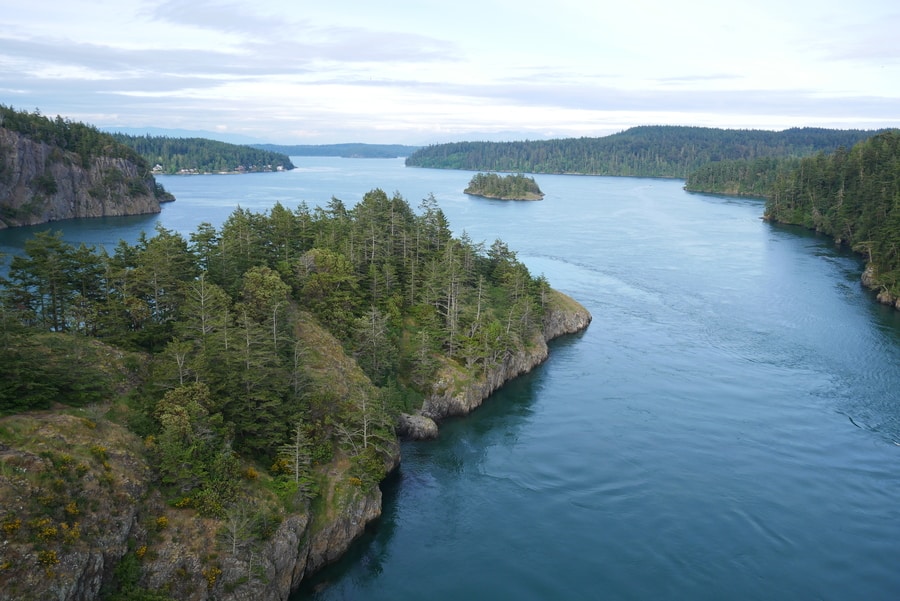
Deception Pass is a popular day trip destination that seduces visitors with its breathtaking views, its old-growth forests, and its abundant wildlife.
The state park spans both sides of an impressive and oft-photographed bridge. The Civilian Conservation Corps built the bridge in the 1930s. To this day, it is still considered to be an impressive engineering feat.
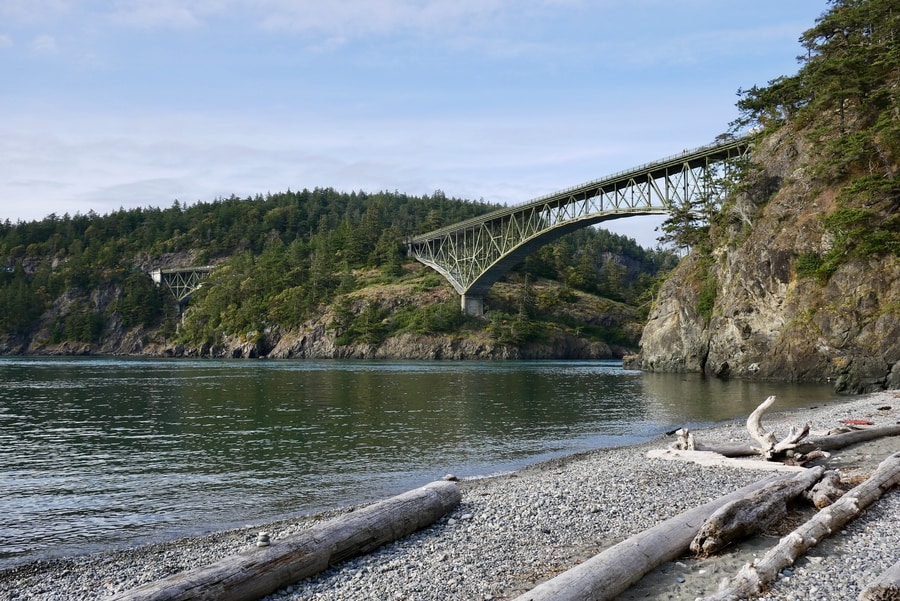
During our short visit to Deception Pass, we hiked to the summit of Goose Rock, admired the views from the bridge, and headed down to North Shore Beach.
FOLLOW HIGHWAY 20 TO NORTH CASCADES NATIONAL PARK
Highway 20 connects the Skagit Valley with Washington’s rugged Cascade Mountains. It is one of the most spectacular drives in the United States.
As we followed the Skagit River eastward in search of eagles, the topography transformed from pancake-flat farmlands to coniferous mountainsides. From the towns of Concrete and Marblemount, it is only a stone’s throw to the North Cascades—one of three iconic national parks in Washington State.
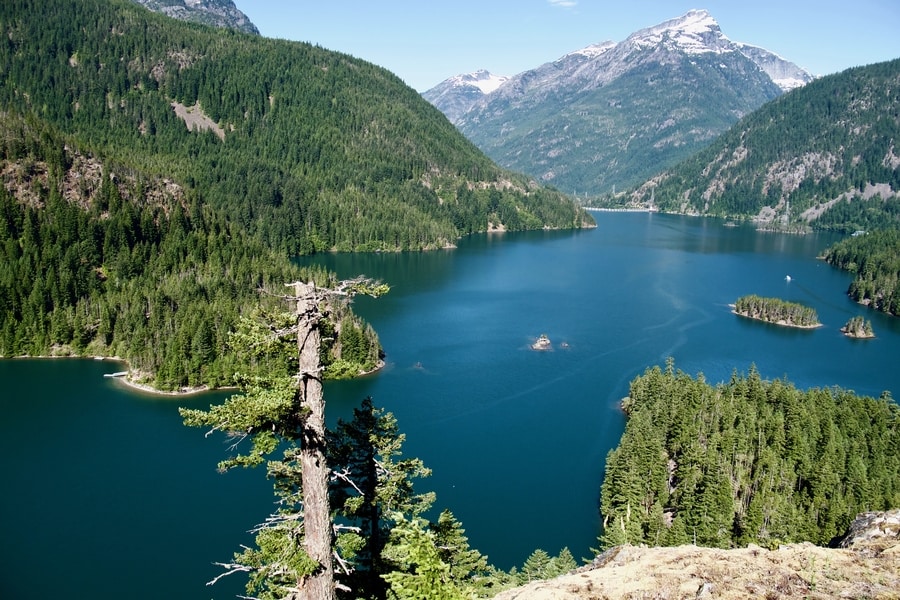
Skagit County includes the westernmost portions of North Cascades National Park. Though the park is a backpacker’s paradise that certainly deserves its own dedicated trip, some of its hiking trails are easily accessible from towns along the Skagit River Valley.
WHERE TO STAY IN THE SKAGIT VALLEY
Admittedly, I’ve never spent the night in Skagit County. The area’s proximity to Seattle makes it too good of a day trip destination.
If I wanted to stay in a central location in the midst of the area’s abundant attractions, however, I would likely choose Mount Vernon or La Conner. La Conner appears to be a bit pricier, whereas Mount Vernon offers a slew of standard chain hotels at lower prices.
Top-rated accommodation options in the La Conner area include the Wild Iris Inn, the La Conner Channel Lodge, and Katy’s Inn.
Fifteen minutes away in Mount Vernon, top places to stay include the Best Western Plus and Tulip Inn.
WHEN TO VISIT THE SKAGIT VALLEY
The Skagit Valley is truly a year-round destination. While its weather is best enjoyed in summer, two of its top activities are only possible in springtime and winter.
Ultimately, the best time to visit the Skagit Valley depends entirely on what you’d like to see and do.
If you’re hoping to see the tulip bloom, visit in spring. For eagle-viewing, the best time to visit is winter (cloudy skies mean that the eagles fly lower to the ground).
And for everything else, you can never go wrong with summer or fall.
****
Washington’s Skagit Valley may be often overlooked, but the fertile area is a gateway to some of the most enchanting destinations along the Cascade Loop. It is home to bucolic pastures, quaint waterside towns, historic landmarks, and flower-filled farmlands. Farther afield, the area invites exploration into the Cascade Mountains, the San Juan Islands, and the northwesternmost reaches of the continental United States.
Though most are lured by its display of springtime colors, the Skagit Valley’s year-round activities make it a perfect day trip destination, no matter the season.
___________________________________________________
Did You Enjoy this Guide to Washington’s Skagit Valley? Pin It!
